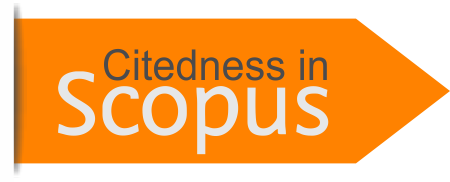IoT-Based Smart Plug with Real-Time Energy Measurement Optimization and Adaptive Current Cutoff
Abstract
The use of electrical energy as a primary power source is increasing, with the residential sector being one of the largest consumers. Electrical energy expenditure often occurs accidentally, potentially leading to energy waste. This research develops an IoT-based electricity usage monitoring system to minimize electrical energy waste and help users improve efficiency and protection against voltage spikes using the R&D approach with a waterfall model.There are 3 layers of IoT architecture using the PZEM-004T sensor as a measuring device for electrical parameters and ESP8266 as a communication module where the results of the sensor readings will be displayed in real-time on the LCD and Blynk with a time difference of 1.6 seconds, in addition to the cost indicator, and the current flowing conditions are also displayed. Sensor readings are valid with values < ± 0.5% for current and voltage and < ± 1% for power readings. System monitoring tests were carried out on 10 electronic devices, and the results of the estimated electricity costs from the use of electrical energy of these electronic devices were obtained. The system is also equipped with a protection feature displayed with a warning indicator, where if the current exceeds 3.1A, the power will automatically be cut off within 15 seconds. This system provides a solution to the efficiency of electrical energy expenditure and provides more protection.
Keywords
References
Humas EBTKE, “Kebutuhan Listrik Indonesia,” Kementrian ESDM. Accessed: Jul. 23, 2024. [Online]. Available: https://ebtke.esdm.go.id/post/2023/01/20/3405/dirjen.ebtke.paparkan.pemenuhan.kebutuhan.listrik.indonesia.melalui.pemanfaatan.ebt
X. Cao, X. Dai, and J. Liu, “Building energy-consumption status worldwide and the state-of-the-art technologies for zero-energy buildings during the past decade,” Energy and Buildings, vol. 128, pp. 198–213, Sep. 2016, doi: 10.1016/j.enbuild.2016.06.089.
H. Rahmadyani and H. E. Kusuma, “Empat Kelompok Perilaku Boros Energi: Penyusunan Hipotesis Menggunakan Grounded Theory,” JP, vol. 14, no. 2, pp. 82–91, Nov. 2019, doi: 10.31815/jp.2019.14.82-91.
D. Almanda, K. Krisdianto, and E. Dermawan, “Manajemen Konsumsi Energi Listrik Dengan Menggunakan Sensor PIR dan LM 35,” elektum, vol. 14, no. 1, pp. 16–22, Apr. 2017, doi: 10.24853/elektum.14.1.16-22.
S. Ma’shumah, E. K. Pramartaningthyas, and A. G. Rokhim, “Implementasi Internet of Things (IOT) pada Sistem Monitoring dan Notifikasi Pemakaian Listrik Rumah Tangga Berbasis Aplikasi Blynk,” Jurnal Power Elektronik, vol. 12, no. 3, pp. 144–149, 2023.
S. Widi, “Konsumsi Energi Listrik Indonesia Kembali Meningkat pada 2022,” DataIndonesia. Accessed: Jan. 25, 2024. [Online]. Available: https://dataindonesia.id/energi-sda/detail/konsumsi-listrik-indonesia-capai-18341-juta-boe-pada-2022
D. K. Sharma, A. K. Kaushik, A. Goel, and S. Bhargava, “Internet of Things and Blockchain: Integration, Need, Challenges, Applications, and Future Scope,” in Handbook of Research on Blockchain Technology, Academic Press, 2020, pp. 271–294. doi: 10.1016/B978-0-12-819816-2.00011-3.
L. Venica, E. N. Irawan, and D. I. H. Putri, “IoT with Firebase: Smart Ring Android App Using MAX30100 for Fatigue Detection,” Journal of Electrical, Electronic, Information, and Communication Technology, vol. 6, no. 1, pp. 8–15, 2024, doi: https://dx.doi.org/10.20961/jeeict.6.1.81312.
S. Rahman and A. Aula, “Sistem Monitoring dan Proteksi pada Stop Kontak Berbasis IoT,” JEPIN, vol. 8, no. 1, pp. 104–110, Apr. 2022, doi: 10.26418/jp.v8i1.48052.
W. T. Soe, I. Mpawenimana, M. D. Fazio, C. Belleudy, and A. Z. Ya, “Energy Management System and Interactive Functions of Smart Plug for Smart Home,” International Journal of Information and Communication Engineering, vol. 11, no. 7, pp. 876–883, 2017, doi: scholar.waset.org/1307-6892/10007752.
N. Prayongpun and V. Sittakul, “Smart Plug for Household Appliances,” in Proceedings of 2nd International Conference on Intelligent Computing and Applications, vol. 467, in Advances in Intelligent Systems and Computing, vol. 467. , Singapore: Springer Singapore, 2017, pp. 317–325. doi: 10.1007/978-981-10-1645-5_26.
L. Albraheem, H. Alajlan, N. Aljenedal, L. A. Alkhair, and S. B. Gwead, “An IoT-based Smart Plug Energy Monitoring System,” IJACSA, vol. 14, no. 10, pp. 353–362, 2023, doi: 10.14569/IJACSA.2023.0141038.
A. Zulkifli, Misbahuddin, and M. A. Nrartha, “Rancang Bangun Stop Kontak Pintar (Smart Plug) Berbasis Internet of Things,” Universitas Mataram, pp. 1–11, 2020.
D. M. Wonohadidjojo and J. A. Wibawa, “Sistem Pemantauan dan Pengendalian Alat Elektronik Dengan Stop Kontak Pintar Menggunakan Aplikasi Smartphone,” justin, vol. 11, no. 2, pp. 330–338, Jul. 2023, doi: 10.26418/justin.v11i2.56366.
R. F. Permatasari, R. Wati, P. Hanifah, and Misriyanti, “Kampanye Hemat Listrik Terhadap Efisiensi Energi Pada Ibu Rumah Tangga Yang Bekerja,” PSIKO, vol. 7, no. 2, pp. 71–81, Jun. 2019, doi: 10.30872/psikostudia.v7i2.2407.
M. G. Y. Dolar Febriliant, M. K. Luthfi, and S. Hidayatullah, “Aplikasi Pengontrolan Energi Berbasis Smart Plug, Stop Kontak Otomatis Pada Rumah Pintar (Smart Home),” Prosiding Seminar Nasional Teknologi dan Sains, vol. 3, pp. 175–182, 2024.
M. Abdi Reinanda, V. Novendra Sulu, R. Bryan Alfredo, and T. Herlina Rochadiani, “Implementasi Internet of Things (IoT) Dengan Sensor DS18B20 dan Float Sensor Untuk Monitoring Suhu dan Ketinggian Air Pada Proses Memandikan Bayi,” jati, vol. 8, no. 3, pp. 3824–3829, Jun. 2024, doi: 10.36040/jati.v8i3.9813.
Masnur, “Aplikasi Sistem Pengendali Energi Listrik Menggunakan RaspberryPI pada Smart Building,” JSilog, vol. 1, no. 2, pp. 103–106, May 2021, doi: 10.31850/jsilog.v1i2.849.
M. Nasar, N. Setyawan, A. Faruq, and I. Sulistiyowati, “A Simple Real-Time Energy Analytics Model for Smart Building Using Open IoT Platforms,” indones.j.electron.telecommun., vol. 19, no. 2, p. 83, Dec. 2019, doi: 10.14203/jet.v19.83-90.
A. A. Pradana, P. Yuliantoro, and S. Indriyanto, “Perancangan Sistem Monitoring Daya Listrik 1 Fasa Pada Rumah Tangga Berbasis Internet of Things,” J. SINTA: Sist. Inf. dan Teknol.Komputasi, vol. 1, no. 1, pp. 1–9, Jan. 2024, doi: 10.61124/sinta.v1i1.13.
B. Arto, B. Winarno, and N. A. Hidayatullah, “Rancang Bangun Smart Plug Untuk Sistem Monitoring Dan Proteksi Hubungsingkat Listrik,” eltikom, vol. 3, no. 2, pp. 77–84, Nov. 2019, doi: 10.31961/eltikom.v3i2.123.
R. R. Ibrahim and B. Yulianti, “Rancang Bangun Monitoring Pemakaian Arus Listrik PLN Berbasis IoT,” pp. 43–51.
M. A. Baehaqi and S. S, “Rancang Bangun Sistem Monitoring Daya Menggunakan Intenet of Thing (IoT),” TEDC, vol. 17, no. 1, pp. 1–5, 2023.
M. N. Hidayah, R. Alfita, and K. Aji, “Implementasi Internet of Thing Untuk Kontrol dan Monitoring kWh Meter Pascabayar,” Jurnal Pendidikan Teknik Elektro Undiksha, vol. 9, no. 3, pp. 161–170, 2020.
R. R. Wahyudin, R. S. Lubis, and Syahrizal, “Tinjauan Instalasi Listrik di Gedung B Fakultas Teknik Universitas Syiah Kuala,” Jurnal Komputer, Informasi Teknologi, dan Elektro, vol. 8, no. 3, pp. 135–145, 2023.
I. Syukhron, R. Rahmadewi, and Ibrahim, “Penggunaan Aplikasi Blynk Untuk Monitoring dan Kontrol Jarak Jauh pada Sistem Kompos Pintar Berbasis IoT,” Jurnal Rekayasa dan Teknologi Elektro, vol. 15, no. 1, pp. 1–11, 2021.
M. N. Adiwiranto, C. B. Waluyo, and B. Sudibya, “Prototipe Sistem Monitoring Konsumsi Eenergi Listrik Serta Estimasi Biaya Pada Peralatan Rumah Tangga Berbasis Internet of Things,” Jurnal Edukasi Elektro, vol. 06, no. 1, pp. 32–41, 2022.
M. A. Surya Antara and W. A. Suteja, “Analisis Arus, Tegangan, Daya, Energi, dan Biaya Pada Sensor PZEM-004T Berbasis NodeMCU ESP8266,” patj, vol. 5, no. 1, pp. 76–84, Apr. 2021, doi: 10.33857/patj.v5i1.405.
W. Sunanda, S. Bahri, and M. Jumnahdi, “Rancang Bangun Alat Pemantau Arus, Tegangan dan Daya Berbasis Blynk (Studi di Gedung Dharma Penelitian Universitas Bangka Belitung),” ELE, vol. 16, no. 3, pp. 264–270, Sep. 2022, doi: 10.23960/elc.v16n3.2274.
M. Tooley, Electronic Circuits - Fundamentals & Applications, 4th ed. Abingdon: Routledge, 2015. doi: 10.4324/9780080477503.
I. Chairunnisa and Wildian, “Rancang Bangun Alat Pemantau Biaya Pemakaian Energi Listrik Menggunakan Sensor PZEM-004T dan Aplikasi Blynk,” JFU, vol. 11, no. 2, pp. 249–255, Apr. 2022, doi: 10.25077/jfu.11.2.249-255.2022.
Article Metrics
Metrics powered by PLOS ALM
Refbacks
- There are currently no refbacks.
Copyright (c) 2025 National Research and Innovation Agency

This work is licensed under a Creative Commons Attribution-NonCommercial-ShareAlike 4.0 International License.
























